![]() The Plants Issue
The Plants Issue
Read the Editor’s Note
When your first restaurant is called The Spotted Pig, it’s fair to say your name might become synonymous with pork. Add to that a cookbook called A Girl and Her Pig—plus a well-documented friendship with offal advocate Fergus Henderson—and it’s easy to understand how Chef April Bloomfield became known as a master of meat cookery. Yet in 2015, Bloomfield took her savory story in what seemed like an unexpected direction, swapping nose-to-tail for root-to-leaf with the publishing of a second cookbook: A Girl and Her Greens.
The truth is that it’s silly to consider any chef who has received as many accolades as Bloomfield—James Beard Awards and Michelin Stars among them—as a master of any one thing. In fact, for more than a decade, Bloomfield’s success has been her ability to successfully realize a wide range of restaurant concepts—from The Spotted Pig’s Italian-inflected gastropub menu to The Breslin’s hearty British plates, The John Dory’s seafood-centric dishes to Salvation Burger’s twist on an all-American classic.
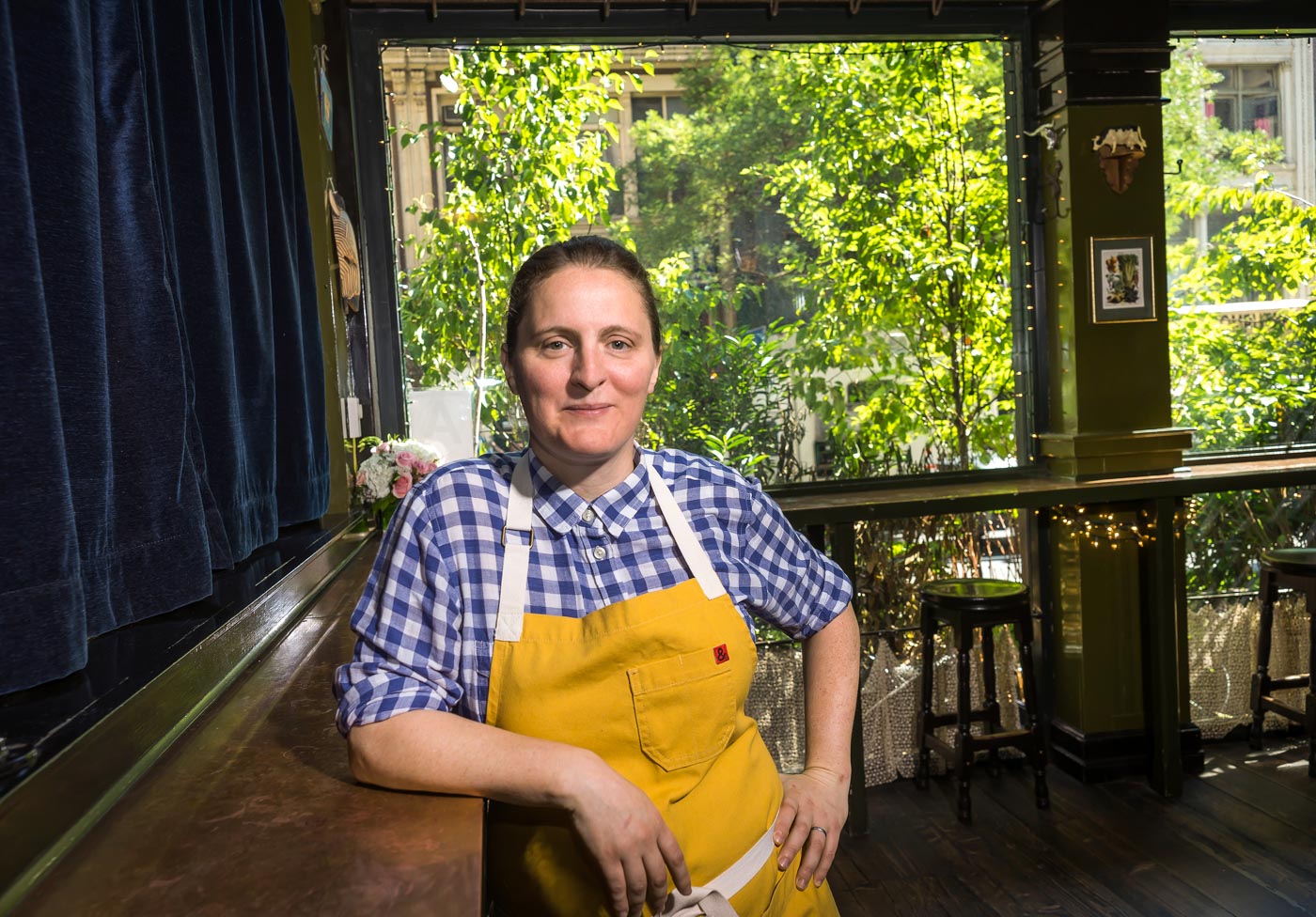
A conversation with Bloomfield yields the same complexity: she’s a moving target, warm and eloquent, but rarely offering a concise, PR-ready sound bite. Her voice borders on soft-spoken, yet she wields obvious experience and authority. Ask her a question you know she has heard a million times, and she’ll still pause to consider how to answer. Better yet, she may throw the question back to you—not to evade answering, but to welcome another perspective into the discussion. In person, it quickly becomes hard to think of Bloomfield as a “celebrity chef.” Surely, the chef has shown up, but the glitter of fame doesn’t seem to have stuck.
Which is to say that Bloomfield knows exactly what she signed up for: a career that requires a lifetime of hands-on labor, with no express train to the finish line. In speaking about her education as a cook, she mentions a British National Vocational Qualification—or NVQ—that was first established when she was finishing her studies. In theory, procuring the new NVQ would allow culinary school graduates to enter into the industry as a sous chef, rather than a humble line cook. Bloomfield adds, “I was only 17, but I was like, ‘That’s kind of wrong, isn’t it?’ Why would I want to leave school and become something I’m not?”
Twenty-five years later, Bloomfield is still refining what it means to be a chef and a restaurateur. While many others view restaurant age like dog years (10 to 15 being a full life expectancy), Bloomfield calls her 12-year-old Spotted Pig a mere adolescent. She adds, “When you open a restaurant, it’s really just a baby. It takes so long for you to get your legs, to get to the point where you’re able to keep evolving. We’ve still got a long way to go.”

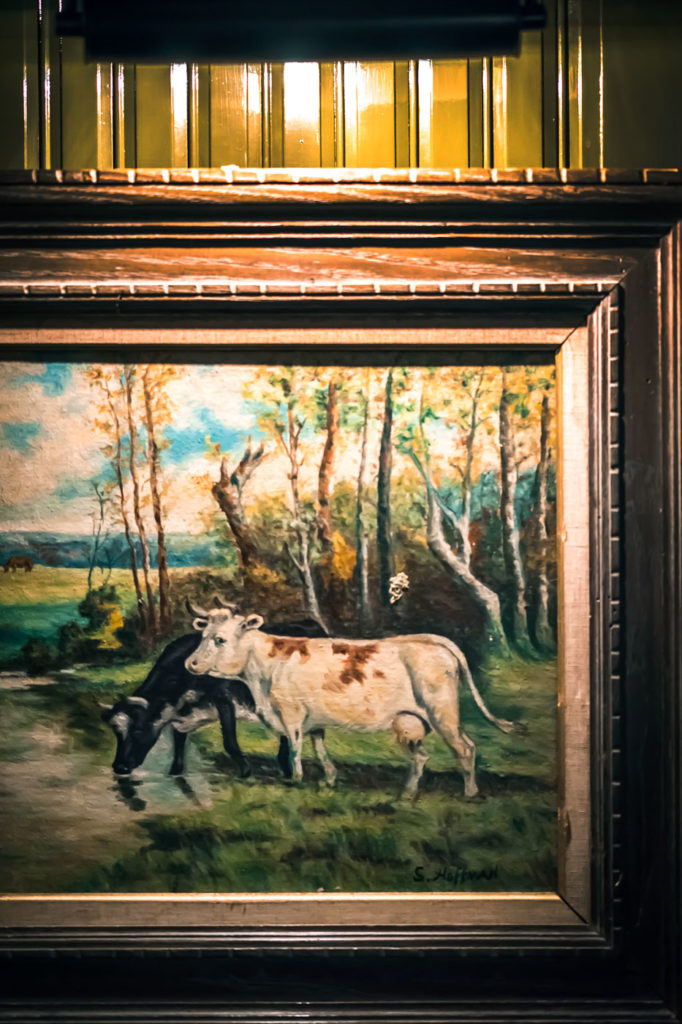

The next “baby” in Bloomfield’s growing brood is the recently opened White Gold on Manhattan’s Upper West Side. The name stems from a classic butcher’s term for flavorful ribbons of animal fat, although Bloomfield is trusting the house cuts to two other impressive female chefs: Erika Nakamura and Jocelyn Guest. Bloomfield’s own role is to oversee the butcher shop’s adjoining 50-seat restaurant, where a heavy emphasis on veggies challenges the meat-centric surroundings.
Which brings us back to plants. For Bloomfield, the relationship between meat cookery and vegetable dishes has always been a symbiotic one. “That was the real reason I wanted to write the vegetable cookbook,” she explains. “A little fortification with fat or stock can elevate a dish, so that you’re not eating a ton of meat, but you get a sense of richness, of umami. I always save my bacon fat, for example, and will fry onions and tomatoes in it to make tomato sauce. It’s very little meat, but it really layers the flavor.”
Much of this appreciation of vegetables and scrap-saving mentality comes from Bloomfield’s oft-referenced time at London’s The River Café under Ruth Rogers and Rose Gray. The restaurant’s no-nonsense Italian plates relied heavily on sourcing and subtly transforming the best ingredients, rather than manipulating sub-par produce with overwrought cooking techniques.
“Rose and Ruth had a great way of pulling flavor out vegetables, of concentrating the flavors in different ways than I ever had learned before,” Bloomfield recalls. “A lot of that came through slow roasting or quickly blanching, followed by frying or baking in a wood oven. That process of caramelization adds a delicateness to vegetables, a ‘more-ish-ness’ that just makes you want to eat a ton of them. They become less bitter or intense, and they’re less floral, but you still get that wonderful fragrance, plus a concentrated sweetness from the roasting process.”



The River Café also exposed Bloomfield to new ingredients and methods for preparing vegetables that she disliked as a child. “Growing up, I always loved cauliflower, broccoli, peas, carrots—especially all the brassica and sulfurous vegetables. But at River Café, I really fell in love with celeriac and fennel.”
Another noteworthy rung on Bloomfield’s ladder is the summer she spent in California in 2003. Between leaving London and arriving New York, she worked at what many consider the founding place of American farm-to-table cuisine: Chez Panisse. Within the year, she had opened The Spotted Pig with Ken Friedman in the West Village, which, despite, its pork-heavy name, received noteworthy mentions for its decidedly un-British celebration of plants:
“In its culinary ethos of sourcing high-quality seasonal ingredients, The Pig is more Chez Panisse than Corner Bistro—a convivial place to have a pint, sure, but also a wonderful place to eat and, most shockingly, considering England’s long record of parsnip-and-turnip abuse, a safe haven for vegetarians.”
– Rob Patronite and Robin Raisfeld, New York Magazine, 2004
Long waits and epic popularity aside, it would take 10 years for Bloomfield to earn a James Beard Award for her work at The Spotted Pig, a stretch in which the restaurant’s influence has been finely felt. First and foremost, the gastropub’s arrival heralded a reinvention of bar food across the city. From Long Island Bar to The Wren, Rose’s Bar & Grill to The Happiest Hour, the field for bars whose plates rival the bartenders’ talents has since reached a fever pitch. And, of course, we’ve all seen the rapid ascent of vegetables from side dish or colorful complement to the pièce de résistance.
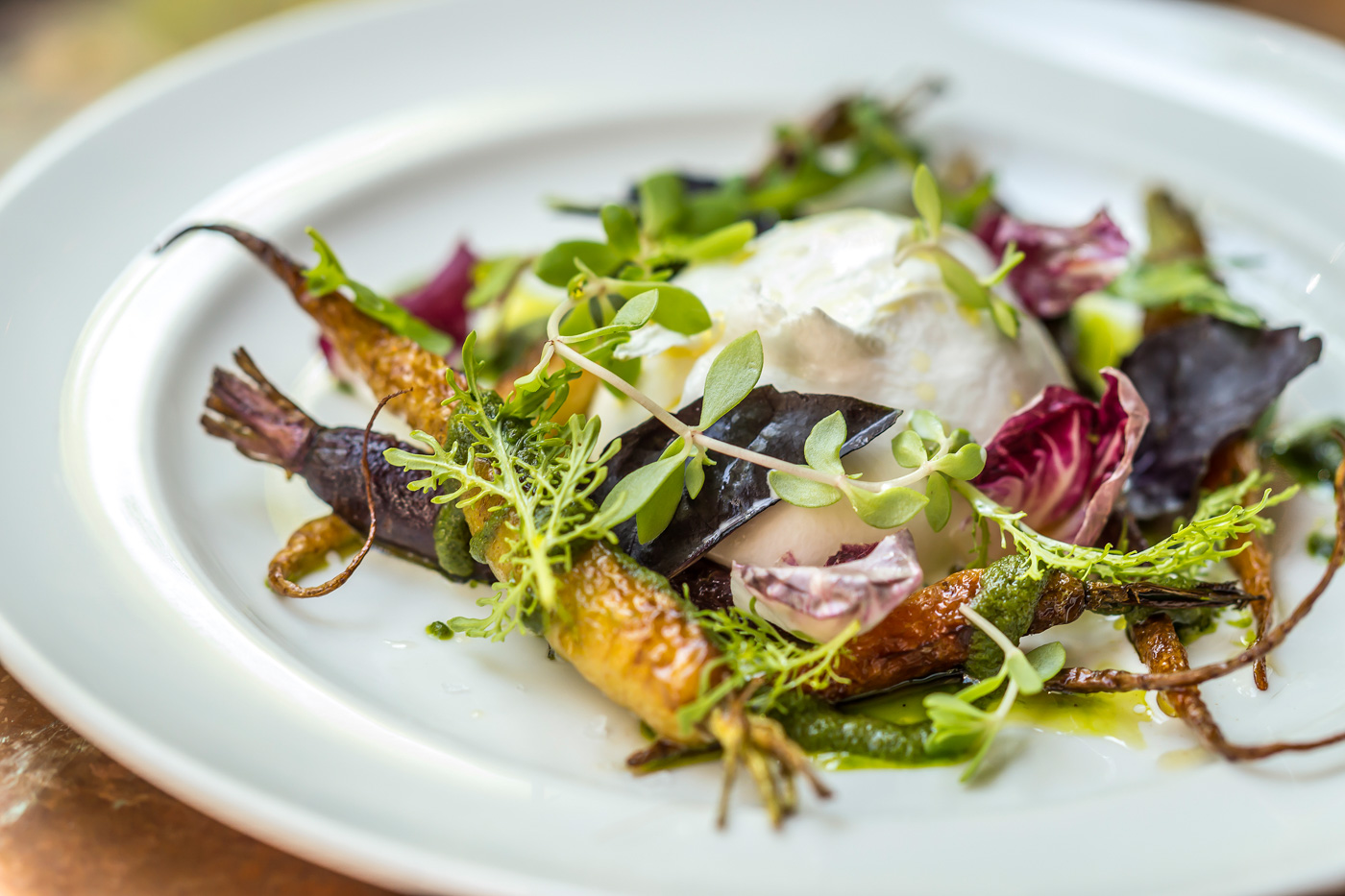
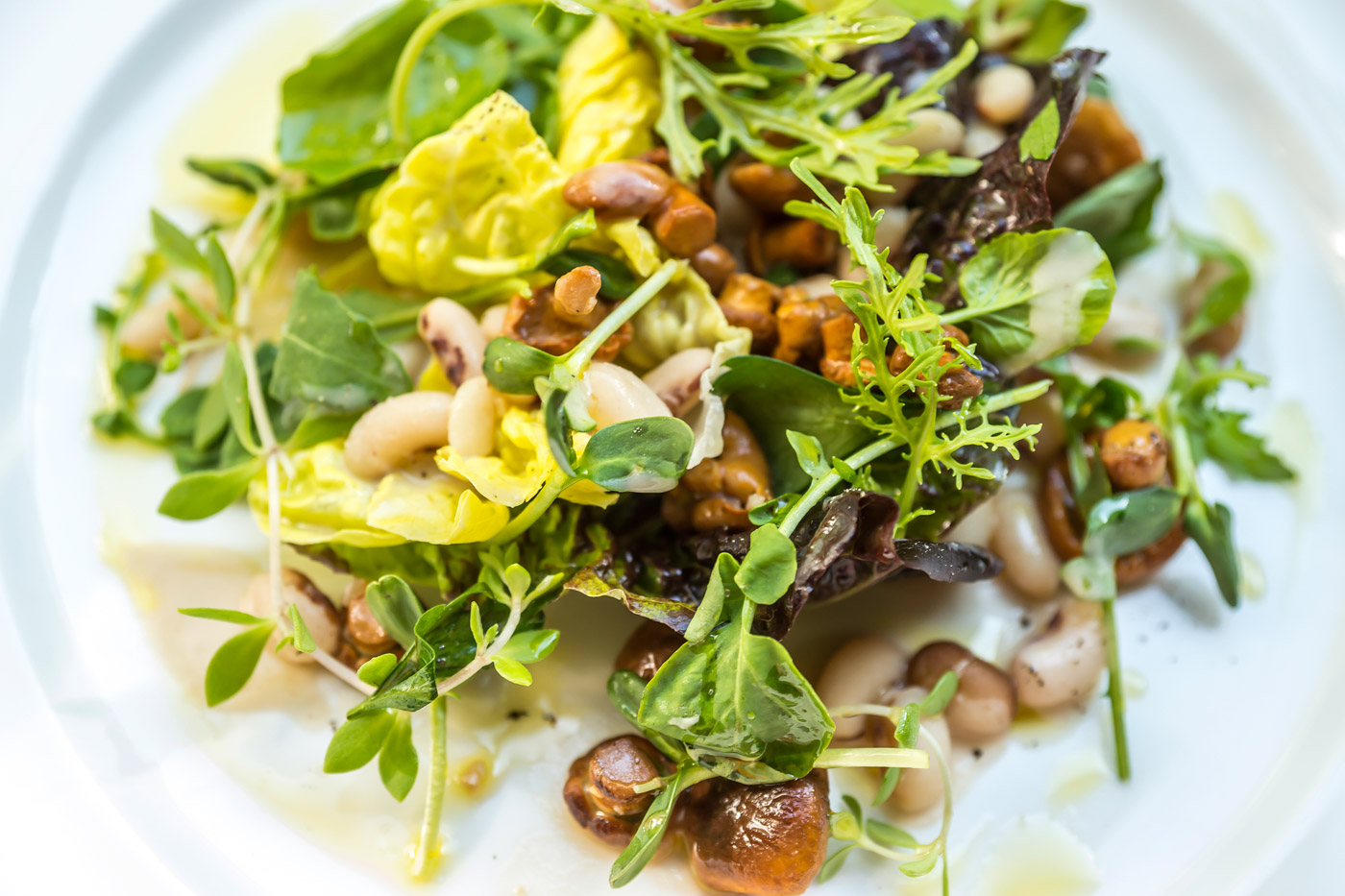
Admittedly, Bloomfield’s own brand became less vegetable-centric in the years immediately following the birth of “The Pig.” “When I came to New York, I had been cooking Italian for about four years, which I fell in love with at River Café. I had that in my veins, and I felt like I connected with Italian food very deeply, so I carried that on at The Pig,” she tells me. “But after about a year, I started looking into my roots and traditional English dishes, and that’s where the nose-to-tail focus stemmed from. Additionally, I had become good friends with Fergus Henderson and ate frequently at St. John’s during my last year in London. That sparked an interest in returning to my childhood memories and focusing on how to make those dishes better and more delicious.”
Anyone who has watched Bloomfield’s seven-episode stretch on Mind of a Chef will vividly recall the episode in which she cooks kidneys on toast for Henderson. Viewed by a predominantly American audience, it’s a departure into deeply unfamiliar territory. Which leads me to wonder if Bloomfield, as a New York City-based restaurateur, feels her identity is tied to any one particular place. “I feel still quite British, deep down. I love Britain. The produce there, the countryside, visiting London and Birmingham. It’s a part of my heritage,” she says. “But I love being in New York too. How close everything feels here, and I love the weather. Plus, it’s great to really have those classic New York moments. Someone hits somebody else’s car, and 10 people are chiming in on what happened in their thick New York accents.”
For the public, Bloomfield’s legacy feels decidedly British too. Just sitting inside the Breslin—her moody, hardwood and hunting paraphernalia-adorned restaurant in Flatiron’s Ace Hotel—tells a vivid story about the chef’s inspiration and heritage. “What makes British cuisine British…” April ponders, “well, we have very classic dishes we stick to and we keep improving. It’s all about new ways to do the same thing, the need or the want to make things better. I really love that.”
Just this year, Bloomfield’s love for Britain has inspired her to put down literal roots, purchasing a farm in Cornwall with UK-based chef Tom Adams. Adams, as the owner of London barbecue restaurant Pitt Cue Co. seems an even more improbable vegetable advocate, yet the pair have conceived the project as a place to experiment in both the garden and the kitchen—as well as an off-the-beaten path destination for a small number of lucky visitors. “Tom’s at the farm right now!” says Bloomfield. “In April he planted radishes, beets and carrots; now he’s foraging for garlic scapes and fermenting, pickling, making kombucha. That’s inspiring to me. It’s all right there. You’re growing and planting and nurturing, then picking and cooking,” she says. “And it’s insane—the control over the product. I was just at the farm and we picked some beets. They were out of the ground less than an hour; I simply scrubbed them clean, added Cornish sea salt and butter, and roasted them in a cast iron pot in the oven. They were so flavorful, rich and earthy. And they cooked really fast—just 25 minutes!”



Bloomfield’s future farming ambitions extend to upstate New York. Currently, she sources as much product from local greenmarkets as she can, but she notes that the financial realities for farmers make it hard to grow products with restaurants in mind: “A lot of farmers are comfortable growing what they grow and making money on that, so they’re not always willing to invest in new breeds of plants. When we throw out suggestions, some may be intrigued, but there’s still a sense of reluctance.”
Whether pork or parsnip, that relationship with farmers and appreciation for ingredients is central to Bloomfield’s exacting style. “I question a lot when I cook,” she explains. “I really look at the ingredients in front of me. I look first, then I feel and I taste. A lot of cooks don’t do that. They aren’t present in the moment, but that’s where you really understand what you need to do with a vegetable.”
Contrasted with the traditional home cooking that inspires so many of her plates, her dishes are a reminder of just how good—how much better than homemade—restaurant cooking can be. Take, for example, a coil of deftly seasoned lamb sausage, paired with bright herbs, slivered summer beans and cubes of al dente green tomato. It’s a masterful juxtaposition of texture and balance, richness and lightness. To use Bloomfield’s own description of her cooking, it’s “vibrant, energetic, punchy.”
Most importantly, it’s refreshing—a quality that Bloomfield brings to the table in even her heaviest dishes. “Nothing is worse than when you’re eating at a restaurant and it just doesn’t hit the spot. I love acidity, and I try to incorporate it wherever I can; it makes you want to eat more, so you don’t get bored.” For example, at Salvation Burger, Bloomfield sneaks kimchi into the mix, which guests likely wouldn’t realize: “That slightly tangy, fermented flavor really brings things together.”
Whether it’s her acidity or brightness, soulfulness or comfort, the single word that might express Bloomfield and her cooking best is immediacy. As a diner, that attentiveness translates to the plate, and it echoes in Bloomfield’s own vision for the future. “I worry that we are moving too fast, too soon, and that we miss the key points. Everybody is so transient now, so obsessed with social media, Pokémon Go, fast casual. If that keeps happening, where will the people like me come from?,” she asks.
“I was recently at Blue Hill farm, and Chef Dan Barber served a group of us this potato he had been working on. All it had was a little salsa verde on top, but it was a dish where you go holy shit—that feeling where it stops you in your tracks,” she says. “You’re forced to enjoy it, live it, breathe it. That’s the kind of food I crave—cooking with substance.”





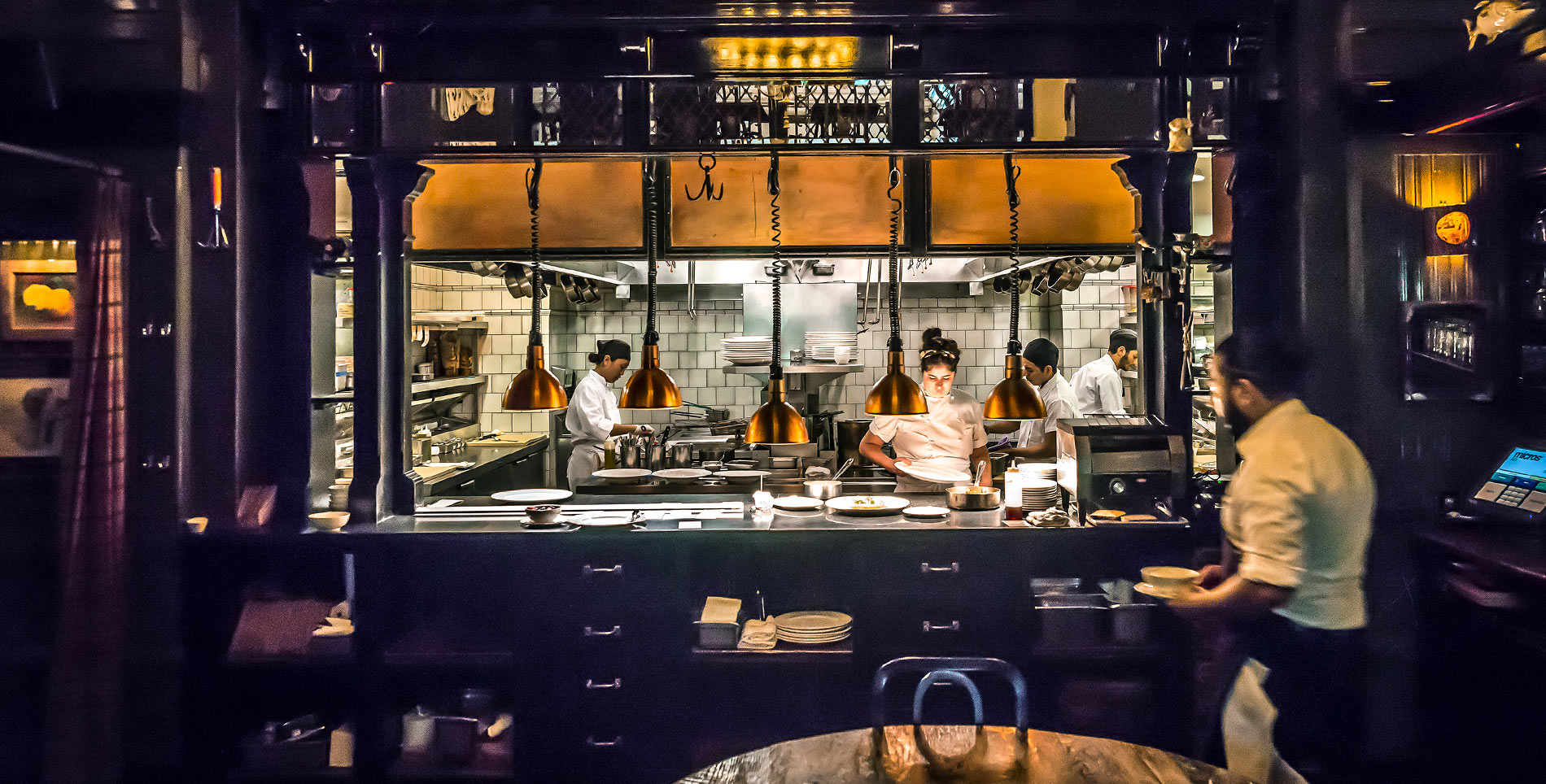

Our comments section is for members only.
Join today to gain exclusive access.